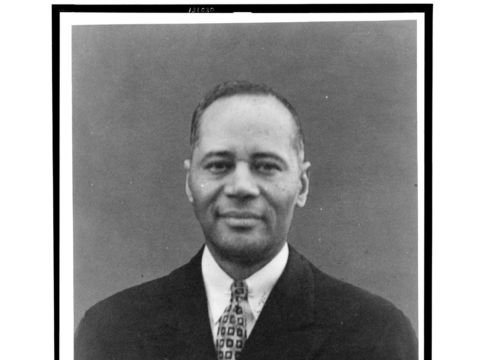Last month, Education Secretary Arne Duncan made a speech at the Edmund Pettus Bridge in Selma, Alabama, in which he lamented the fact that many high schools that serve disadvantaged students and students of color lack highly effective teachers. Duncan affirmed the education department’s commitment to working with districts to get effective teachers into the schools where they are needed most. The Race to the Top competition and proposals to reauthorize No Child Left Behind both include efforts to ensure the equitable distribution of effective teachers.
But boosting the numbers of effective teachers in high-need schools is not a simple matter. In a new article on the Education Next website, Kati Haycock of the Education Trust and Eric Hanushek of Stanford University engage in a debate over the most promising strategies for increasing the number of effective teachers in high-poverty schools.
Haycock and Hanushek agree that forcing effective teachers to teach in particular schools is not a good solution. “Instead, as district leaders are discovering for themselves,” Haycock writes, “a better solution lies in a creative combination of targeted incentives for teachers and policies that empower administrators and school leaders to recruit and retain effective educators.” Hanushek suggests a different approach: “We need to refine the evaluation of teacher effectiveness, and we need to introduce the serious use of evaluations into the schools, evaluations that guide tenure, retention, and pay decisions.” The former strategy focuses on increasing the chances that a high-need school will be able to hire effective teachers, the latter focuses on removing from high-need schools teachers who are not producing gains in student learning.
Hanushek explains that regulations in general are not likely to solve the teacher quality problem. Regulations work best when it is possible to measure the underlying attributes that contribute to success. When it comes to teaching, most of the attributes we can measure do not contribute to success.
Education leaders need to be able to identify the strongest teachers and the weakest teachers directly. Haycock and Hanushek agree that we need much better value-added data linked to individual teachers. They also agree that developing more reliable data is only a part of the solution—we also need much better qualitative evaluations of teachers. While “it will take time to develop richer and more sophisticated measures of teacher effectiveness,” Haycock writes, “until then policymakers should use a combination of the best available measures.”
Hanushek notes that the largest variations in teacher quality are found within schools, not across schools. This means that the best way to equalize the distribution of teachers is not to swap teachers out of low-poverty schools and into high-poverty schools. Instead, schools should work to keep those teachers who are producing large gains in student achievement and remove those who are not producing gains. For this, Hanushek writes, “it is more a matter of will, combined with eliminating the rigidities that have been built into teachers’ contracts.” He elaborates, “the current contractual arrangements are in many cases overly concerned with teachers’ rights and less concerned about student outcomes than is desirable. It would make sense to work toward more assignment flexibility by school districts. But, again, this may be lower priority than simply having more control over retention based on classroom effectiveness.”
Haycock emphasizes the importance of policies that go beyond improving retention decisions within schools. She writes,
We need new policies that empower local superintendents and principals to use that information to better recruit and distribute highly effective teachers. Districts can move up timelines for teacher resignations and transfers and give principals in hard-to-staff schools first dibs on new entrants and transfers. States and districts can establish a policy of “mutual consent” that gives principals the right to choose their own teachers. States can take actions to pump up the supply of stronger teachers by using data on the effectiveness of graduates to improve teacher training programs, expanding those that produce strong teachers and shrinking or closing those that do not. States and districts can eliminate seniority-based layoffs, which should consider effectiveness instead, and make it easier to transfer or remove ineffective teachers who cannot improve.
Hanushek and Haycock agree that incentives can play a role in improving teacher quality in urban schools, but both warn that incentives may be only a small part of the answer. Haycock notes that financial incentives may have to be fairly large to convince effective teachers to transfer to and remain in hard-to-staff schools, and that even large financial incentives may not work in the absence of better working conditions.
Hanushek concludes,
We must use the direct and available information on teacher effectiveness that comes from objective achievement data and subjective evaluations for both administrators and teachers to guide rewards and management decisions. We may conclude that this is too difficult—because of union contracts, traditions, or other issues. In that case, we must be willing to live with disastrous results or, alternatively, be prepared to give parents the real opportunity to choose better schools.
The full article, “An Effective Teacher in Every Classroom,” will appear in the Summer 2010 issue of Education Next and is now available online.



